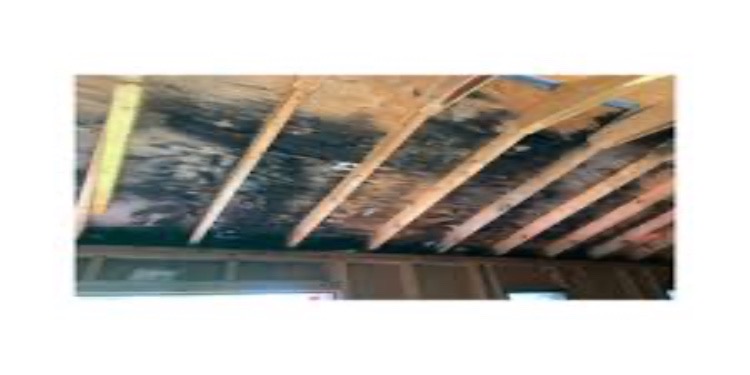Mold is a common household issue that causes concern among many homeowners. However, myths and misconceptions about mold persist, often leading to unnecessary panic or improper handling of mold problems. In this blog post, we aim to debunk some of the most common myths about mold and provide you with accurate, science-backed information. By separating fact from fiction, we hope to empower you to deal with mold issues more effectively and confidently.
Myth 1: All Mold Is Dangerous
The Truth
Not all mold is harmful. While certain types of mold, such as Stachybotrys chartarum (commonly known as black mold), can produce mycotoxins that pose health risks, many molds areAn error occurred during generation. Please try again or contact support if it continues. Relatively harmless. In fact, some types of mold are beneficial and play an important role in nature by breaking down organic materials.
Why Does This Myth Exist?
The fear surrounding mold stems from its potential to cause health problems when present in large quantities or when certain individuals are particularly sensitive to it. This has led to a misconception that all mold is dangerous, which is simply not true.
Takeaway
It is important to properly identify the type of mold present and assess the extent of the problem before determining if it poses a health risk. In most cases, small amounts of common household mold are not harmful and can be easily remediated.
Myth 2: Bleach Kills Mold
The Truth
Bleach does not effectively kill mold. While bleach may appear to remove mold on the surface, it does not address the root of the problem. In fact, bleach can actually make matters worse by providing moisture for mold to grow and potentially releasing harmful fumes into the air.
Why this Myth Exists
Many people believe that because bleach is a strong disinfectant, it must be effective against mold. However, mold is a resilient organism and simply wiping it away with bleach does not solve the underlying issue.
Takeaway
Instead of using bleach, it is recommended to use specialized mold cleaners or natural methods such as vinegar and hydrogen peroxide. It is also important to address the source of moisture that is causing the mold growth in order to prevent it from recurring.
Myth 3: All Black Mold is Toxic
The Truth
While some types of black mold can produce toxins, not all black mold is toxic. In fact, the color of a mold does not determine its level of toxicity. The only way to know for sure if a mold is harmful is through professional testing.
Why this Myth Exists
Black mold has been heavily publicized as dangerous, leading many people to believe that all black mold is toxic. However, there are over 100,000 different species of mold and not all produce harmful toxins.
Takeaway
It is important to take caution when dealing with any type of mold, regardless of its color. If you suspect a mold problem in your home, it is best to have it professionally tested and addressed by a trained specialist. Do not rely on color or appearance to determine the level of danger posed by mold.
Overall, it is important to educate ourselves about mold and its potential risks, so that we can make informed decisions when dealing with any potential mold issues in our homes. Mold can be a pesky and persistent problem, but with proper knowledge and techniques, it can be effectively managed and prevented.
Myth 4: Bleach Kills Mold Effectively
The Truth
Although bleach is a commonly used cleaning agent, it is not as effective in killing mold as many people believe. Bleach may remove visible mold growth temporarily, but it does not address the underlying issue and can actually promote further mold growth.
Why this Myth Exists
Bleach has been touted as a miracle solution for killing mold due to its ability to remove stains and discoloration caused by mold. However, bleach is primarily effective on non-porous surfaces and does not penetrate porous materials where mold may be hiding.
What You Should Do Instead
Instead of relying on bleach as a solution for removing mold, it is important to use appropriate cleaning methods that target the source of the problem. This may include using a mixture of water and detergent or a specialized mold cleaning product, depending on the severity of the issue.
Additionally, it is important to address any underlying moisture issues that are causing mold growth. This may involve repairing leaks, improving ventilation, or addressing high humidity levels in your home. According to a company for mold testing in Fort Pierce, proper mold remediation is mandatory instead of using bleach or any simple chemical.
Myth 5 : Mold Only Grows in Dirty or Neglected Homes
The Truth
Mold does not discriminate based on cleanliness or level of maintenance. While it is true that mold thrives in damp and humid environments, even the cleanest homes can experience mold growth.
Why this Myth Exists
The misconception that only dirty or neglected homes are susceptible to mold growth may stem from the fact that mold is often associated with areas that are damp or have poor ventilation, such as basements or bathrooms. However, mold can also grow in hidden or hard-to-reach places, such as behind walls or under floors.
What You Should Do Instead
Regular maintenance and cleaning can help prevent mold growth, but it is important to also address any potential moisture issues in your home to prevent mold from thriving. In addition, it is important to regularly inspect areas that are prone to moisture, such as bathrooms and basements, and take prompt action if you notice any signs of mold growth. This may include using a dehumidifier or addressing plumbing issues that may be causing excess moisture.
Overall, consistently monitoring and maintaining a clean and dry environment in your home is key to preventing mold growth, regardless of how clean or well-maintained your home may be.









































































